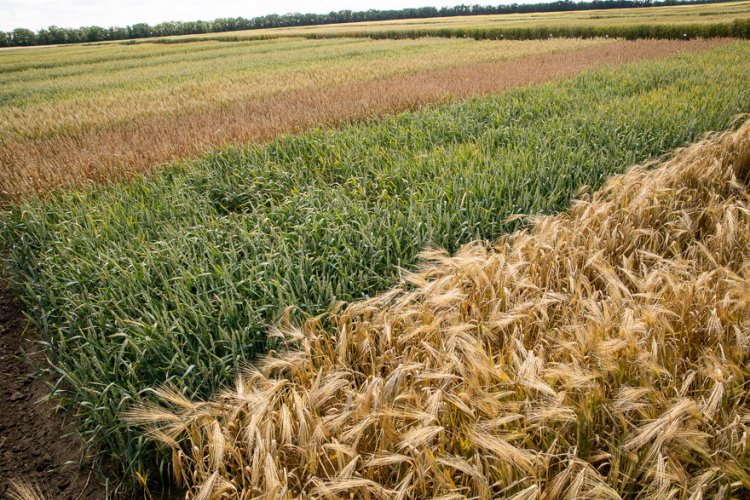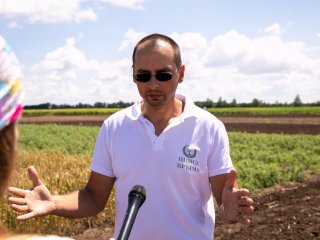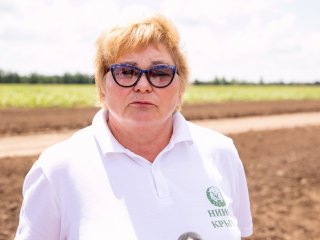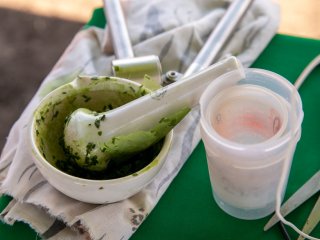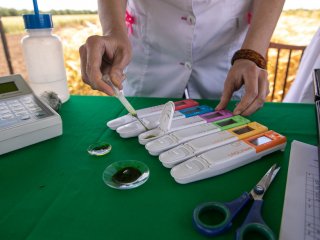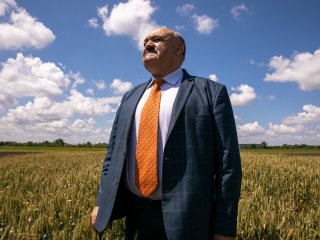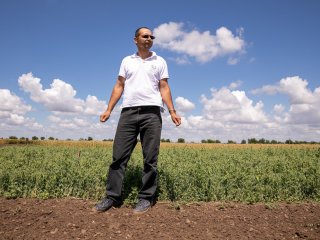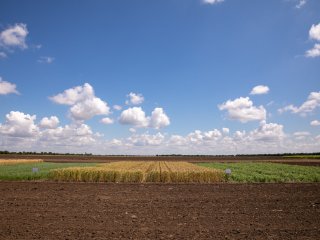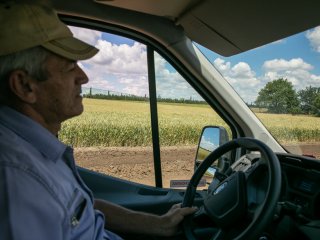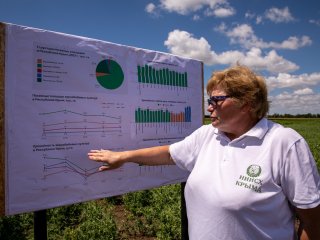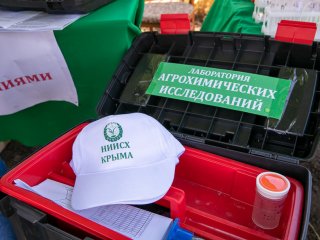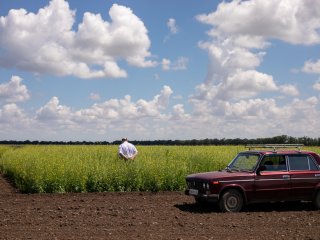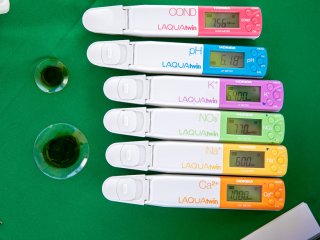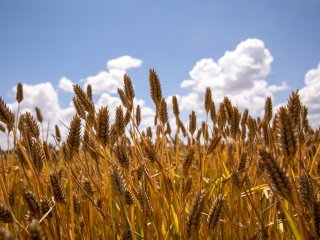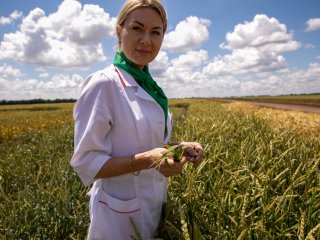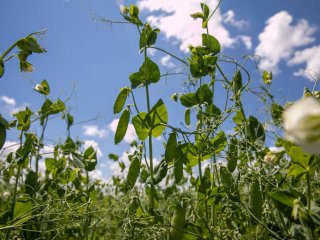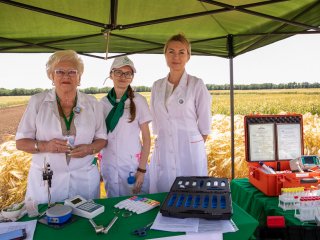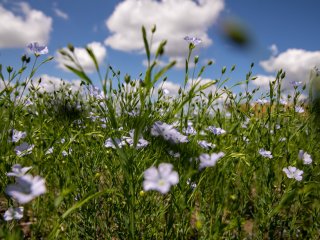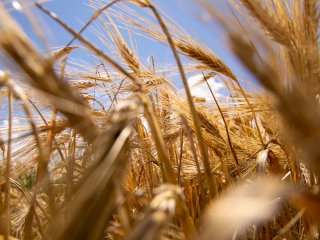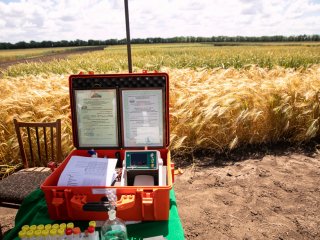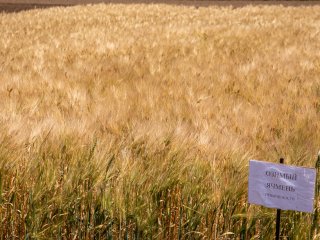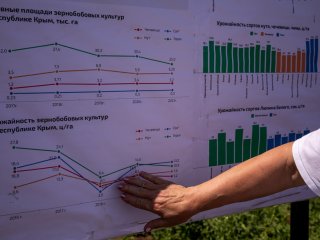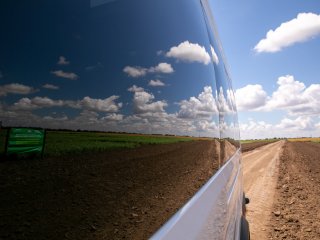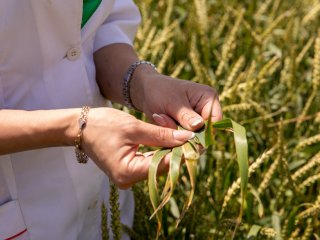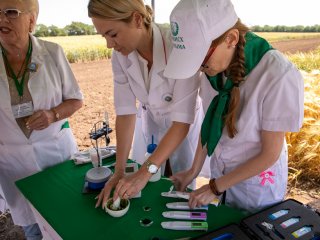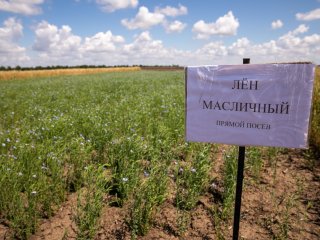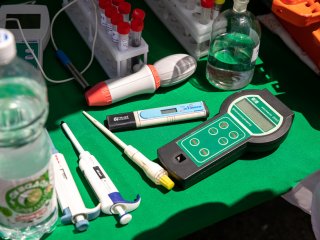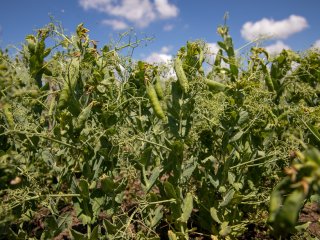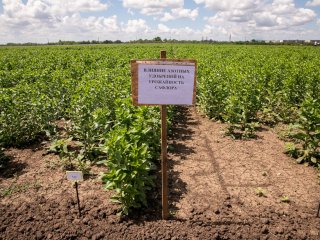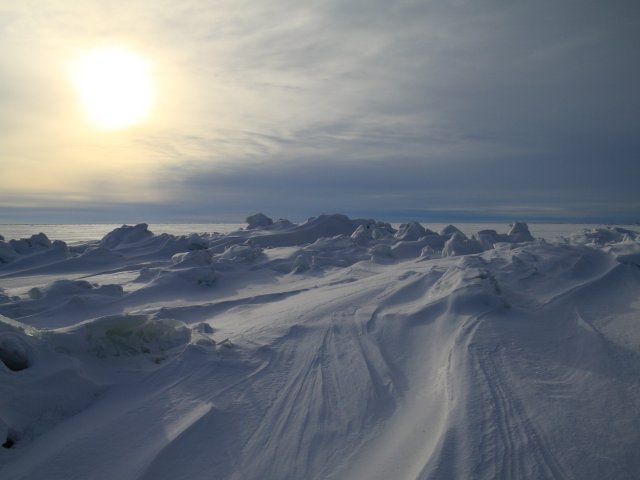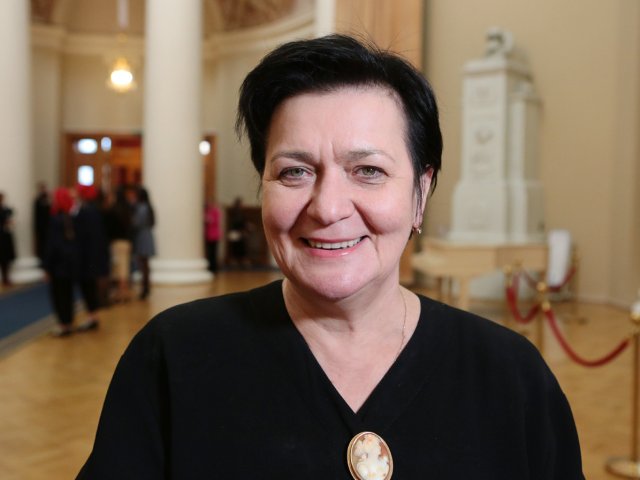On June 12, as part of the press tour to the Republic of Crimea, the Scientific Russia portal visited the Agricultural Research Institute of Crimea, namely the Division for Introduction and Technologies in Field Crop Farming and Animal Husbandry, located in the village of Klepinino (Krasnogvardeisky District). The village was named after Nikolay Nikolaevich Klepinin (1868-1936), the founder of the research institution in the middle of the steppe zone of Crimea.
Research officers and lab specialists of the institute presented innovations in farming and plant cultivation to Scientific Russia, and spoke of technologies used to improve development of crops in the Republic of Crimea.
NO-TILL FARMING
Yevgeny Nikolaevich Turin, Head of the Farming Laboratory at the Agricultural Research Institute of Crimea, described how the no-till farming technique is used. “The air temperature in Crimea has gone up by 2 degrees over the last 30 years. This is quite a lot given that the precipitation level has not changed. Evaporation has increased. The Farming Laboratory analyzed global trends. Our institute made the decision to apply the no-till farming technique (widely used in the US) and follow how it works out in Crimean conditions. The experiment started five years ago. No tillage has been done ever since. We've got good results in terms of yield,” Yevgeny Turin said.
Yevgeny Nikolaevich Turin on land farming technique
According to Anna Andreevna Gangala, research officer at the Agricultural Research Institute of Crimea, the institute is actively using the direct sowing technique. No-till farming preserves soil culture without disrupting its natural process. “We are growing crops with zero tillage. There are direct sawing seed drills are used for that, with a frontal disk cutting through and seeds sown into the virgin soil, on top of the plant residue from previous cultivars. This does not disturb the soil and leaves the plant residue, thus preserving natural fertility and beneficial microbes present in the soil,” Anna Gangala said.
Anna Andreevna Gangala on no-till farming
“OIL-BEARING CAMELS”
Yelena Leonidovna Turina, leading research officer at the Farming Laboratory of the Agricultural Research Institute of Crimea, explained that crop capacity is changing due to drastic weather changes. Ms. Turina pointed out especially, that their primary focus was heat-resistant cultivars during drought periods. “Such crops include shoofly (Sophora tinctoria) and winter camelina. They could also be called “oil-bearing camels” since they sustain high temperatures and various types of drought. Our first experiments with this cultivar, which is entirely new for Crimea, are scheduled for this year. We are investigating farming techniques and various Russian-bred varieties, to find the ones that would fulfill their potential to the fullest under such harsh conditions. Winter camelina is a new crop for Crimean plant cultivation sector. We've been studying it since 2015. We have developed a cultivation technique for it since then, and now we get up to 2 tons of whole oilseeds,” Yelena Turina claims. Camelina oil is an excellent alternative to cod liver oil. It contains a certain portion of Omega 3 and Omega 6 fatty acids, which are good for health.
Yelena Leonidovna Turina on development of oilseed crops
DEVELOPMENT OF GRAIN LEGUMES
Olga Pavlovna Ptachnik, senior research officer of the Laboratory for Seed Breeding and New Genotype Research at the Agricultural Research Institute of Crimea, spoke of the development of grain legumes on the Crimean land. “We develop growing techniques and investigate grain legume varieties. The main grain legume today is pea. Selection of varieties with particular properties may improve the quality of produce and make the crop production more profitable. The objective of our research is ecological investigation of new varieties that are not in production yet. We assess their economic and biological properties when grown in Crimea, and our findings are used to put those varieties into mass production,” Olga Ptachnik said.
Olga Pavlovna Ptachnik on development of grain legumes
EXPRESS LABORATORY
Alla Anatolievna Zubochenko, Head of the Agrochemical Research Laboratory, senior research officer at the Agricultural Research Institute of Crimea, demonstrated how the express laboratory (the only one in Crimea) can operate in the field, assessing nutritious content in the soil and plants. “We need to do it to understand which variety is better and where we would get better grain. Prior to sharing our findings with the Chief Agronomist, we test the soil. It shows us if there is enough of particular elements. Then we provide recommendations on additions. If the soil is fine and the plant is not, that means the plant is sick and needs treatment. The nutrition should be adjusted quickly since the plant’s growth stage change. Therefore, we have to administer the necessary elements and cure the plant within the current growth stage,” Alla Zubochenko said.
Alla Anatolievna Zubochenko on the Agrochemical Research Laboratory
LATEST BRED VARIETIES
Lyudmila Anatolievna Radchenko, Candidate of Agricultural Sciences, Deputy Director for Scientific Work at the Agricultural Research Institute of Crimea, Head of Division for Introduction and Technologies in Crop Production and Animal Husbandry: “We’re doing wheat research here. We start with basic research (selection work) where we cooperate with the Don Agricultural Scientific Center. We use their base material to create new varieties of winter wheat, winter and spring barley, which have to be adapted to our arid conditions. This is the main aspect for us. We have to create drought-resistant varieties, since droughts in Crimea can occur at any growth stage of the plant,” Ms. Radchenko emphasized.
Lyudmila Anatolievna Radchenko on development of the latest-bred varieties
The Agricultural Research Institute of Crimea continue their active work in research and introduction of R&D projects in agro-industry, which promote technological and socio-economic development in the Republic of Crimea.
This material was prepared with the support from the Ministry of Science and Higher Education and the Russian Academy of Sciences.
